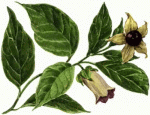Botany
|
30 april 2012 17:03:26 |
| Chloroplastic Hsp100 chaperones ClpC2 and ClpD interact in vitro with a transit peptide only when it is located at the N-terminus of a protein (BMC Plant Biology) |
|
Tweet Background:
Clp/Hsp100 chaperones are involved in protein quality control. They act as independent units or in conjunction with a proteolytic core to degrade irreversibly damaged proteins. Clp chaperones from plant chloroplasts have been also implicated in the process of precursor import, along with Hsp70 chaperones. They are thought to pull the precursors in as the transit peptides enter the organelle. How Clp chaperones identify their substrates and engage in their processing is not known. This information may lie in the position, sequence or structure of the Clp recognition motifs.
Results:
We tested the influence of the position of the transit peptide on the interaction with two chloroplastic Clp chaperones, ClpC2 and ClpD from Arabidopsis thaliana (AtClpC2 and AtClpD). The transit peptide of ferredoxin-NADP+ reductase was fused to either the N- or C-terminal end of glutathione S-transferase. Another fusion with the transit peptide interleaved between two folded proteins was used to probe if AtClpC2 and AtClpD could recognize tags located in the interior of a polypeptide. We also used a mutated transit peptide that is not targeted by Hsp70 chaperones (TP1234), yet it is imported at a normal rate. The fusions were immobilized on resins and the purified recombinant chaperones were added. After a washing protocol, the amount of bound chaperone was assessed. Both AtClpC2 and AtClpD interacted with the transit peptides when they were located at the N-terminal position of a protein, but not when they were allocated to the C-terminal end or at the interior of a polypeptide.
Conclusions:
AtClpC2 and AtClpD have a positional preference for interacting with a transit peptide. In particular, the localization of the signal sequence at the N-terminal end of a protein seems mandatory for interaction to take place. Our results have implications for the understanding of protein quality control and precursor import in chloroplasts. |
| 230 viewsCategory: Botany |
 Genome-wide association mapping of flowering time and
northern corn leaf blight (Setosphaeria turcica) resistance in
a vast commercial maize germplasm set (BMC Plant Biology) Genome-wide association mapping of flowering time and
northern corn leaf blight (Setosphaeria turcica) resistance in
a vast commercial maize germplasm set (BMC Plant Biology)Phylogeographic analysis reveals significant spatial genetic structure of Incarvillea sinensis as a product of mountain building (BMC Plant Biology) 
|
| blog comments powered by Disqus |
MyJournals.org
The latest issues of all your favorite science journals on one page
The latest issues of all your favorite science journals on one page



